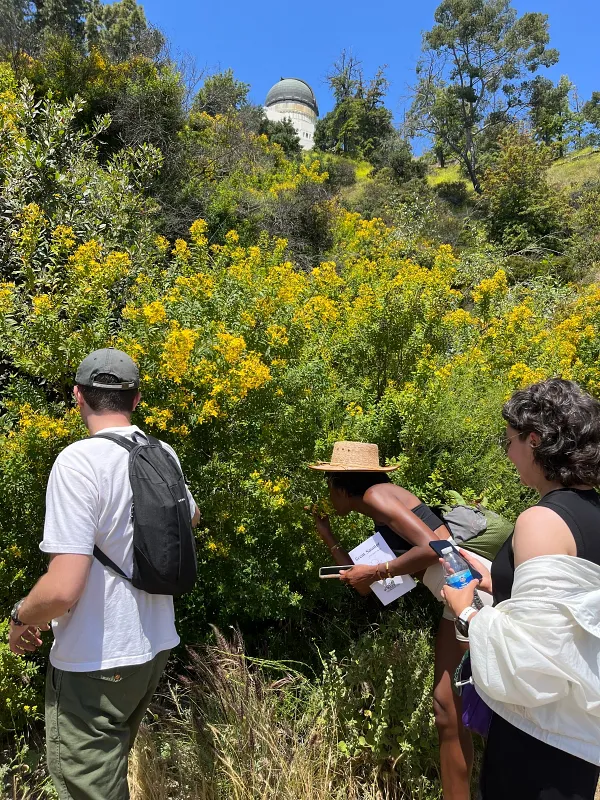Scent enthusiasts Jack Kelly and Natalie Coffen are walking the dusty path up to the Griffith Observatory when they spot a tall, stalky shrub – wild tobacco. They each pluck a dull green leaf from the plant and give it a good whiff.
Think it might smell like a fresh-rolled cigarette? Dark and rich, a little earthy? Think again.
“This is nasty and super funky,” Kelly says. “There's no smokiness.”
“It smells like onion. B.O. It's disgusting,” says Coffen. “It’s nasty as hell.”
Wild tobacco is one of many pungent plants growing in Los Angeles’ Griffith Park, alongside more pleasant-smelling plants, like California sagebrush and laurel sumac. Kelly and Coffen, teamed up with the nonprofit Institute for Art and Olfaction in Chinatown, lead groups on weekend “scent saunters,” to enjoy the city’s more wild smells.
“I don't think scent or olfaction is a sense that's prioritized in our society,” says Coffen, adding that scent often evokes memories. “It really does open up a different part of your brain when you are walking around and being forced to smell what's around you.”

Participants get a whiff of Griffith Park’s wild flora on a recent scent saunter. Photo courtesy of Natalie Coffen.
Kelly adds that transplants to Los Angeles – particularly those who yearn for more dramatic seasonal changes – can recreate that experience by stepping outside and paying attention to the nose.
“Things do bloom more in the spring, and certain things do bloom more toward the end of the year and all of that,” he says. “It's one way to kind of bring that timetable back into your life.”
Kelly and Coffen approach a bush that looks like rosemary, but with lighter green leaves and thinner stems. California sagebrush, Coffen explains while plucking an oily sprig, was an early form of perfume: “Cowboys used to rub it under their armpits.”
Kelly gives it the first whiff. He says he smells eucalyptus, camphor, and menthol. Coffen smells something else – candied lemon peel. “Pine Sol, almost but sweeter,” she says.
Scent is subjective, and the two agree on this: “There's really no wrong answers.”
The next scent saunter is November 4 at 10 a.m. in Franklin Canyon Park. More information, and registration, can be found at the website for the Institute for Art and Olfaction.

